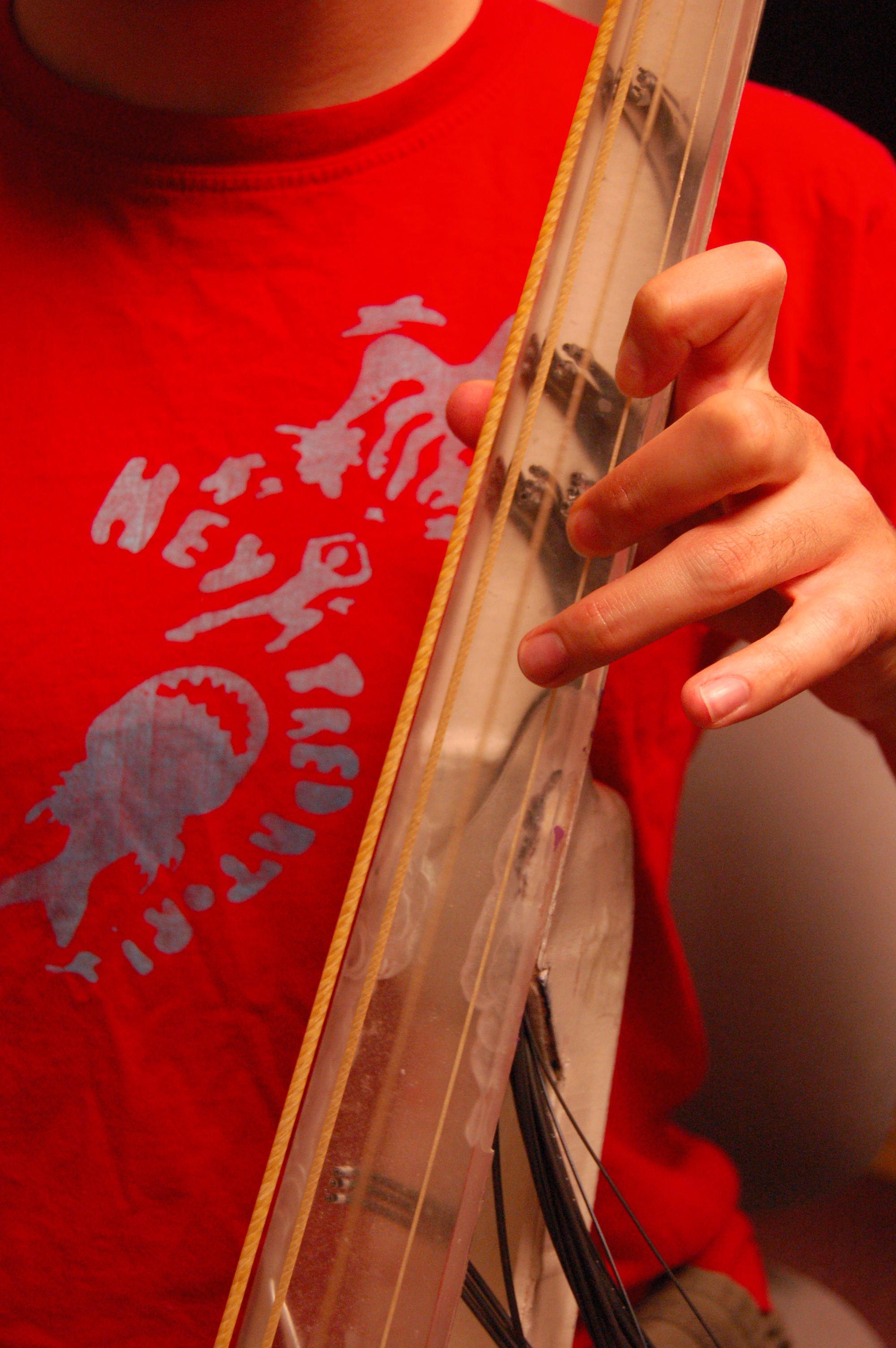This is an old revision of the document!
fMRI-Compatible Cello
| Participants: |
Avrum Hollinger Marcelo M. Wanderley (supervisor) Christopher Steele Virginia Penhune (Concordia University) Robert Zatorre (Montreal Neurological Institute) |

|
|---|---|---|
| Funding: |
Concordia University (Penhune) Canadian Foundation for Innovation (Zatorre & Wanderley) NSERC Discovery Grant (Wanderley) CIRMMT student funds (Hollinger) 2007-2008 |
|
| Project Type: | Collaborative project (CIRMMT, BRAMS - Laboratory for Brain, Music and Sound). | |
| Time Period: | 2006– (Ongoing.) |
Project Description
This project focuses on the development of an MR-compatible cello interface that can be used inside MRI (magnetic resonance imaging) scanners. The optically-sensed electro-acoustic cello allows neuroscientists studying motor learning of musical tasks to perform functional scans of a subject's brain while synchronizing the scanner, auditory and visual stimuli, and auditory feedback with the cellists instrumental gestures, such as fingering, bow speed, and bow pressure.
Publications
- A. Hollinger and M. M. Wanderley. “Optoelectronic Acquisition and Control Board for Musical Applications.” In Proc. of the 2012 International Conference on New Interfaces for Musical Expression (NIME12), Ann Harbour, 2012.
- A. Hollinger and M. M. Wanderley. “MRI-Compatible Optically-Sensed Cello.” In Proc. of IEEE SENSORS 2013 Conference, 2013. Awarded “Best Student Paper, Overall.”

